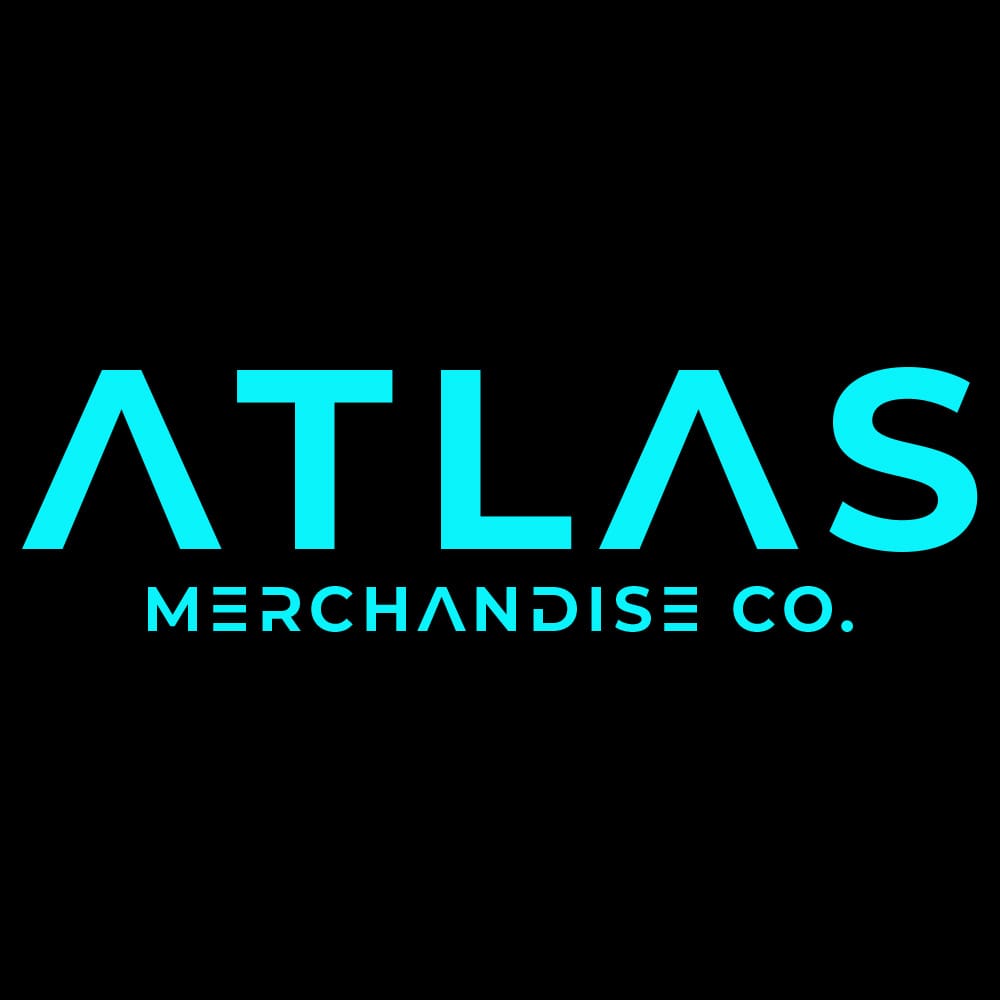Embroidery vs DTF vs Screen Printing: How to Choose the Right Method for Your Custom Merch
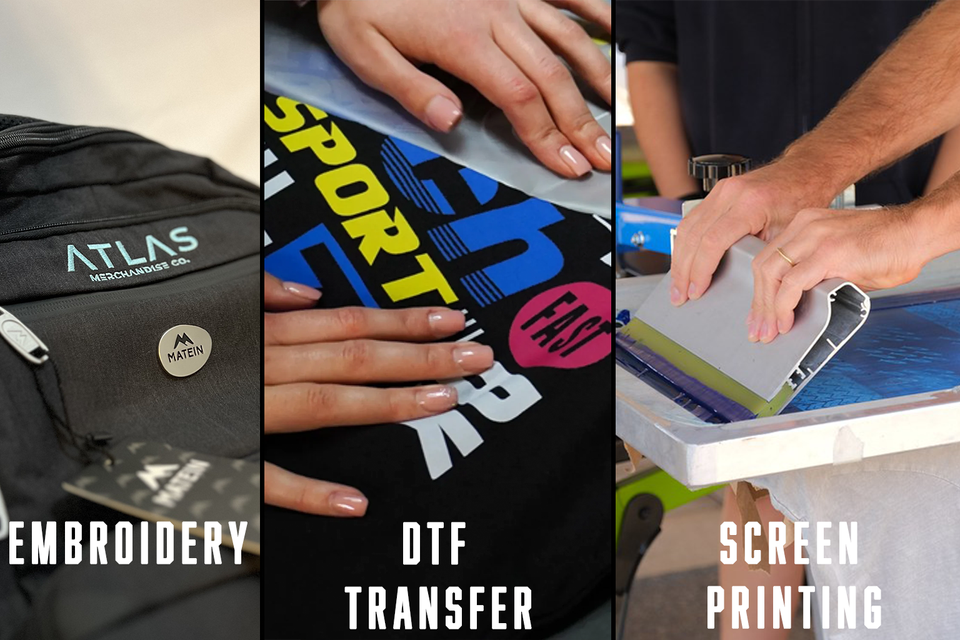
At Atlas Merchandise Co., we don’t just decorate apparel. We help you build your brand. Whether you're a construction company looking for durable work shirts, a gym outfitting your team with merch, or a small business owner making your first run of hats, picking the right decoration method is key to making your gear look sharp and last long.
But here’s the problem: most people don’t know the difference between Embroidery, DTF (Direct-to-Film), and Screen Printing—so they either get upsold, overspend, or worse... end up with merch that doesn’t match their needs.
Let’s fix that. Here are the differences between these decoration methods.
🧵Embroidery: Durable, Premium, and Timeless
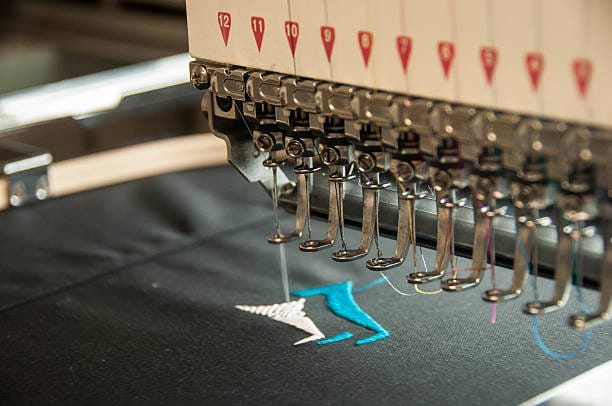
Best for: Hats, backpacks, polos, jackets, heavy-duty gear
Vibe: Professional, high-end, built to last
What it is: Stitching your design directly into the fabric with thread.
Pros:
- It feels premium, like you invested in your team.
- It holds up in tough environments making it perfect for crews and contractors.
- It adds texture and depth you can’t get from ink or transfers.
Cons:
- Super detailed logos with shading or tiny text don’t embroider well.
- Not great for t-shirts or light fabrics. It can make it feel too heavy or stiff.
Pro Tip: If you want your brand to look sharp on hats or jackets, embroidery is the go-to. It's the kind of professional look that makes people trust your business before you even say a word.
🪡Common Use Cases for Embroidery
| Use Case | Why It Works |
|---|---|
| A construction company wants custom logoed hats and work jackets for their crew. | Embroidery holds up in tough conditions, and stitched logos feel premium. Great for brand perception in the field. |
| A landscaping company is outfitting their team in polos to wear on job sites and customer visits. | Embroidery on polos gives a clean, professional look that communicates quality without looking “cheap.” |
| A logistics company gifts branded backpacks to employees and top clients. | Embroidered backpacks look high-end and long-lasting, making them feel like real value gifts. |
🎨 DTF (Direct-to-Film): Fast, Flexible, and Full-Color
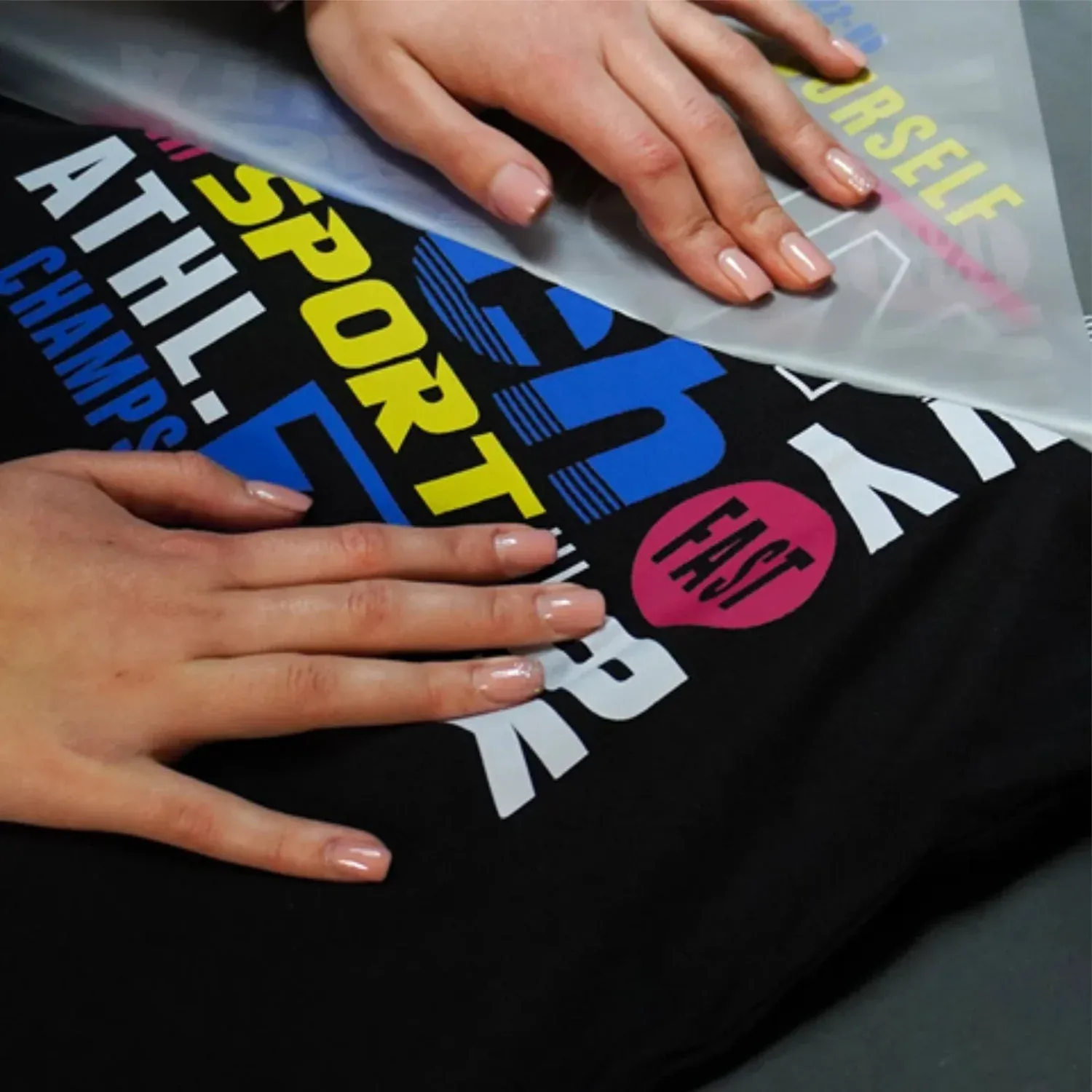
Best for: Smaller batches, colorful designs, multi-location prints
Vibe: Modern, vibrant
What it is: Your design is printed on a special film and heat pressed onto your gear.
Pros:
- It is great for lower quantities or frequent design changes.
- It can handle full-color, photorealistic images very well.
- Works on almost any material like cotton, poly, blends, you name it.
- This makes it a very popular choice for many of our customers.
Cons:
- Does not work well with larger designs as it makes the garment less breathable.
- On heavy-use workwear, it may wear down faster than other methods.
Pro Tip: DTF is like the Swiss Army knife of print methods making it great for trials, samples, or fast-changing drops.
👕Common Use Cases for DTF
| Use Case | Why It Works |
|---|---|
| A fitness apparel brand wants high-impact full-color logo placement on moisture-wicking performance tees. | DTF bonds well to polyester and athletic blends, and maintains color vibrancy through workouts and washes. |
| A local restaurant wants matching branded uniforms across aprons, t-shirts, and caps—with the same multi-color logo. | DTF ensures consistent color and design across different fabric types without needing multiple print setups. |
| A media company is launching a merch line with bold, artistic graphics and illustration-heavy designs. | DTF captures photo-level detail, perfect for complex visuals that don’t translate well with embroidery or screen print. |
🖌️ Screen Printing: Bold, Clean, and Cost-Effective (at Scale)
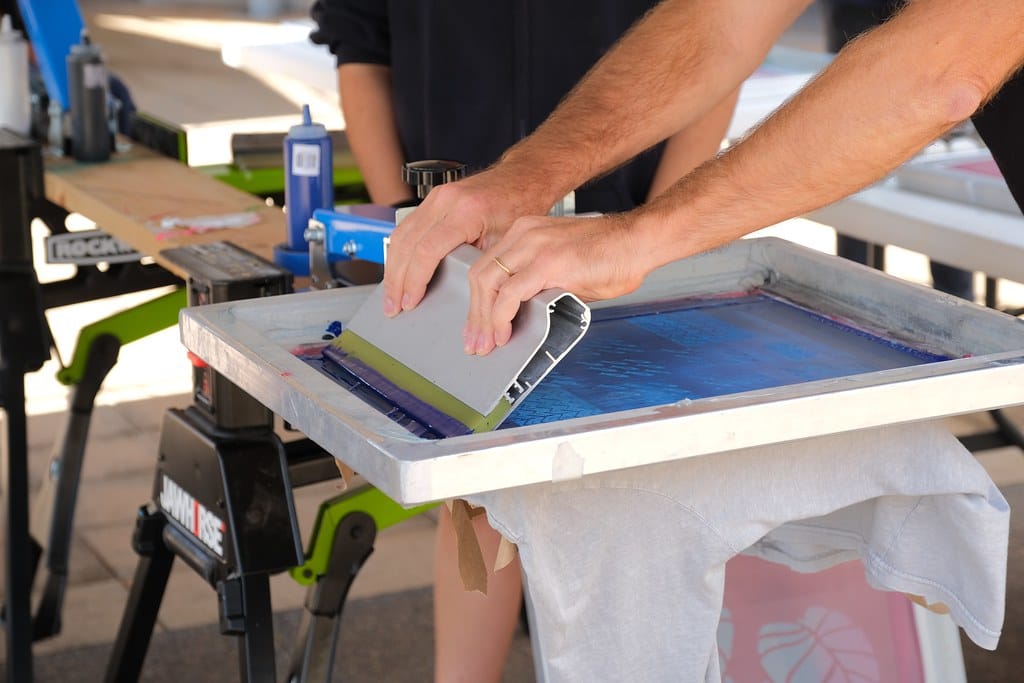
Best for: T-shirts, hoodies, uniforms, larger runs
Vibe: Classic, clean, scalable
What it is: Ink is pushed through a screen stencil onto your fabric—one color per screen.
Pros:
- Super cost-effective for larger runs.
- Long-lasting prints with vibrant, solid colors.
- Perfect for high-volume work shirts or event tees.
Cons:
- Gets expensive for small batches (because of screen setup).
- Multicolor designs add complexity and cost.
Pro Tip: If you're outfitting your whole team or running a 100+ tee order, screen print gives you quality and quantity—without blowing your budget.
🖼️Common Use Cases for Screen Printing
| Use Case | Why It Works |
|---|---|
| A brewery needs 250 shirts for an upcoming festival. | Screen printing offers volume discounts and bright, bold colors that pop in crowds. |
| A nonprofit is launching a fundraising event with giveaway shirts. | Screen printing is cost-effective for large runs, and works well for simple logos or slogans. |
| A school wants PE uniforms with consistent, durable branding. | Screen prints can handle repeat washes and daily wear, making them perfect for uniforms. |
🎯 Quick Guide: Choosing the Right Decoration Method
| Decoration Method | Most Common Use Cases | Compatible Materials |
|---|---|---|
| Embroidery | Hats, polos, jackets, workwear, backpacks | Cotton, canvas, polyester, blends, heavy fabrics |
| Screen Printing | T-shirts, hoodies, uniforms, event merch | Cotton, poly/cotton blends, tri-blends |
| DTF (Direct-to-Film) | Short runs, multicolor logos, samples, photo prints | Cotton, polyester, blends, performance fabrics, nylon |
🚀 Why Trust Atlas?
We're not here to sell you the most expensive option—we're here to sell you the right option. That’s what builds long-term partnerships.
We’ll walk you through every step, help you make informed choices, and treat your brand like it’s our own.
🔥 Want to See the Difference for Yourself?
Book a free merch consultation with our team. We’ll recommend the best method for your project and show you samples so you can see and feel the quality firsthand.

